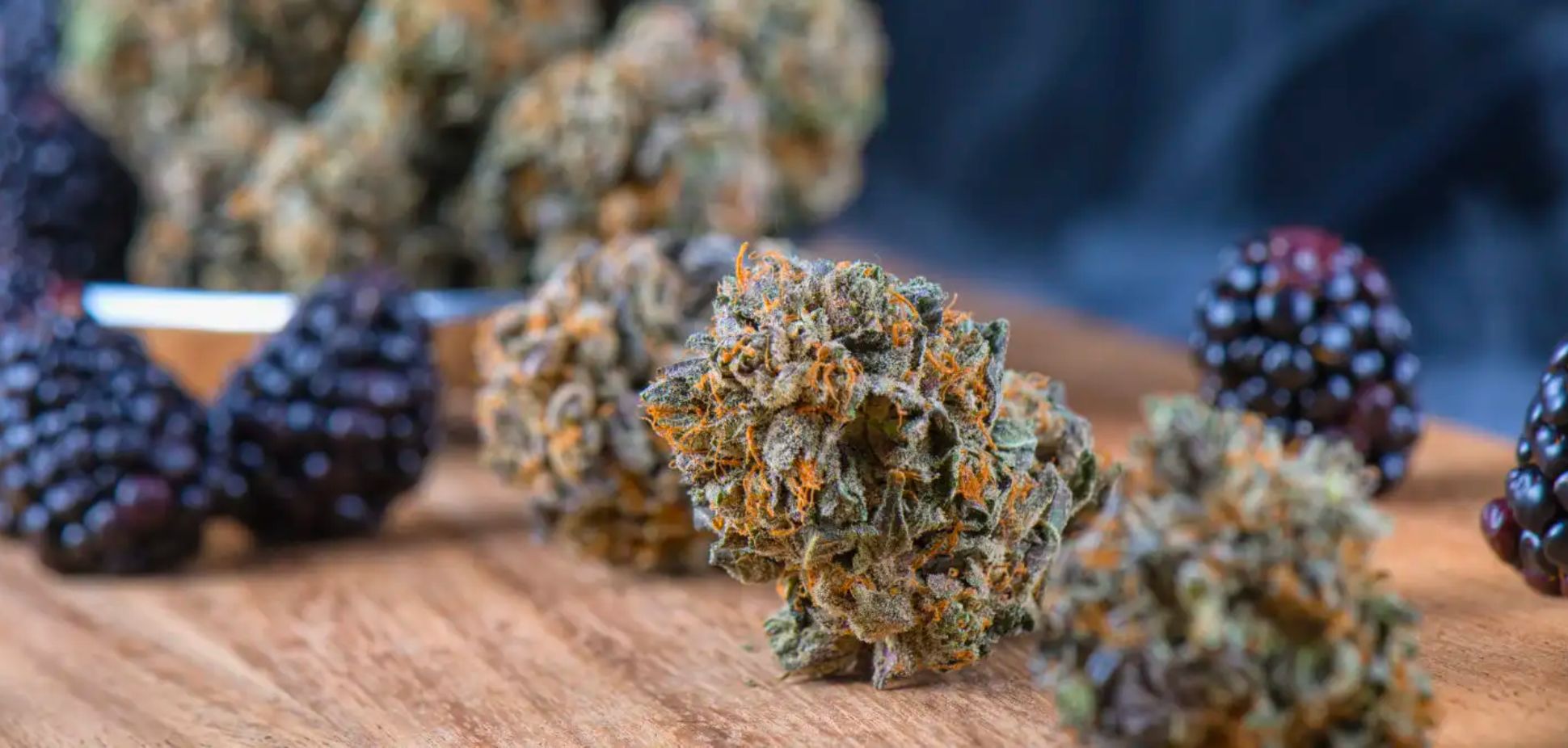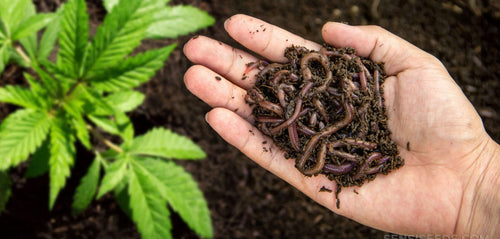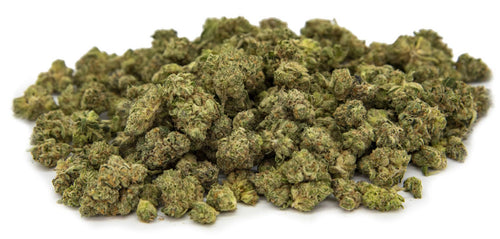#50: The Unsung Heroes of Cannabis: A Deep Dive into Flavonoids
#50: The Unsung Heroes of Cannabis: A Deep Dive into Flavonoids
Cannabis, a plant of myriad mysteries and marvels, boasts hundreds of compounds in its chemical arsenal. Among these myriad compounds, one class often hovers beneath the radar - cannabis flavonoids. These unsung heroes, largely overshadowed by their more famous siblings - cannabinoids and terpenes, are the silent contributors to cannabis's colour, flavour, and an impressive array of health benefits.
Found in abundance in fruits and vegetables, flavonoids are plant metabolites with a diverse range of bioactive properties such as anti-inflammatory, antioxidant, antiallergic, antiviral and anticancer. They are also responsible for the bright hues seen in many plants - from yellow-orange in citrus fruits to the deep purple of blueberries.
Flavonoids found in cannabis are unique to the plant and not found in other sources. Researchers have identified and isolated over 20 flavonoids in cannabis, with some of the most prominent ones being cannflavin A, B, and C. These compounds are known for their potent anti-inflammatory properties which can help alleviate pain, swelling, and inflammation associated with conditions such as arthritis.
In this article, we'll delve deeper into how cannabis flavonoids contribute to the overall experience and therapeutic potential of this incredible plant. We'll also explore their benefits, sources, and highlight some noteworthy flavonoids found in cannabis.
The unsung heroes: Flavonoids and their role in plant and human health
Found in almost all parts of plants, flavonoids are responsible for the bright colours that draw our attention to fruits, vegetables, flowers and even some animals. These compounds are produced in response to environmental stressors such as UV radiation, pests, and diseases.

Have you ever marveled at the red and yellow hues of fall leaves? Those are flavonoids in action. These compounds serve as a natural shield for plants against damaging UV radiation. Interestingly, when we ingest plant-based foods high in flavonoids, we also benefit from their protective qualities. They help safeguard our bodies from oxidative stress and inflammation.
Many studies have shown that flavonoids possess a wide range of beneficial effects, including anti-inflammatory, antioxidant, and neuroprotective properties. They have also been linked to reducing the risk of chronic diseases such as cancer, cardiovascular disease, and neurodegenerative disorders.
When flavonoids are consumed, they travel through the bloodstream, reaching various organs and body systems. Here, they can interact with enzymes, proteins, and other molecules to exert their effects. This interaction is what makes flavonoids such powerful mediators of health benefits.
Highly bioavailable, flavonoids are easily absorbed by the body and reach peak levels in a relatively short time after consumption. This makes them efficient natural remedies for various ailments, offering quick relief and long-term benefits.
Cannabis flavonoids: The hidden gems of healing
In addition to the well-known cannabinoids THC and CBD, cannabis also contains over 20 flavonoids that have been identified so far. These compounds are mainly found in the trichomes of the plant, which are small, hair-like structures that cover the flower buds and leaves.
While not as well-studied as other compounds in cannabis, flavonoids are gaining recognition for their potential therapeutic properties. Some of the most notable flavonoids found in cannabis include:

• Cannflavin A: This flavonoid is unique to cannabis and is known for its potent anti-inflammatory properties. It has been shown to be 30 times more effective than aspirin in reducing inflammation.
• Cannflavin B: Similar to cannflavin A, this compound also has strong anti-inflammatory effects and may help with pain relief.
• Cannflavin C: Preliminary studies have shown that cannflavin C may possess anti-inflammatory properties and could potentially help with conditions such as asthma and allergies.
• Anthocyanin: Responsible for the purple, blue, and red hues in plants, anthocyanins have been shown to possess antioxidant and anti-inflammatory properties. They may also help protect brain cells from damage.
• Quercetin: Found in many plants, including cannabis, quercetin is known for its antioxidant and anti-inflammatory effects. It can also act as an antiviral and anticancer agent.
• Kaempferol: Recognized for its neuroprotective and anti-inflammatory properties, kaempferol may also have a role in preventing cancer and cardiovascular disease.
These flavonoids, together with other compounds in cannabis, give rise to the plant's entourage effect. This term refers to the synergistic interaction of cannabis compounds that enhances the plant's overall therapeutic potential. By working together, cannabinoids, terpenes, and flavonoids can provide a more comprehensive range of health benefits than if they were used individually.
Wondering why more attention isn't given to flavonoids in cannabis? It's because they are often overshadowed by the more well-known cannabinoids and terpenes found in cannabis. However, as research continues to uncover their potential benefits, we can only expect flavonoids to gain more recognition and importance in the world of cannabis.
Strategies to boost the power of cannabis flavonoids
Unlocking the potential benefits of cannabis flavonoids can transform your cannabis experience. Here are a few tips on how to choose and use cannabis to maximize the benefits of these potent compounds.

• Consider extraction methods: Some extraction methods used to create cannabis concentrates can result in the loss of flavonoids. Consider opting for solventless extraction methods or those that use gentle heat to retain more of these beneficial compounds.
• Pair with other flavonoid-rich foods: To enhance the absorption and effects of cannabis flavonoids, pair them with other foods rich in these compounds. Some examples include citrus fruits, berries, apples, and dark chocolate.
• Slow and low heat: When cooking with cannabis, use low heat over a longer period. High heat can destroy delicate flavonoids. Alternatively, try using infusions or oils to preserve the flavonoids' integrity.
• Proper storage: Like other plant compounds, flavonoids can degrade over time and when exposed to heat, light, or oxygen. Store your cannabis products in a cool, dark place to preserve their flavonoid content.
• Raw cannabis consumption: Raw cannabis leaves and buds are rich in flavonoids. Incorporating raw cannabis into your diet through juices or smoothies can be an excellent way to consume these beneficial compounds.
Incorporating these tips into your cannabis use can help you maximize the potential benefits of cannabis flavonoids. Remember, everyone's experience with cannabis is unique, and what works well for one person may not work the same for another. As always, start low and go slow as you explore the world of cannabis flavonoids.
A future coloured with possibilities
Flavonoids in cannabis contribute significantly to the plant's therapeutic properties, complementing the better-known cannabinoids and terpenes. They offer a range of health benefits from anti-inflammatory to anticancer effects, and their high bioavailability makes them an efficient remedy for various ailments. Despite being overshadowed currently, as research continues to explore these powerful compounds, we can anticipate a greater emphasis on flavonoids in cannabis product development and usage.
While they may not enjoy the spotlight as much as cannabinoids and terpenes, the importance of flavonoids is undeniable. The future of cannabis research and product development holds exciting possibilities, and flavonoids will undoubtedly play an indispensable role in shaping that future. So, the next time you consume cannabis, remember to thank those tiny trichomes for their rich flavonoid content. They may just be the key to unlocking your ultimate cannabis experience.
Back to all posts









